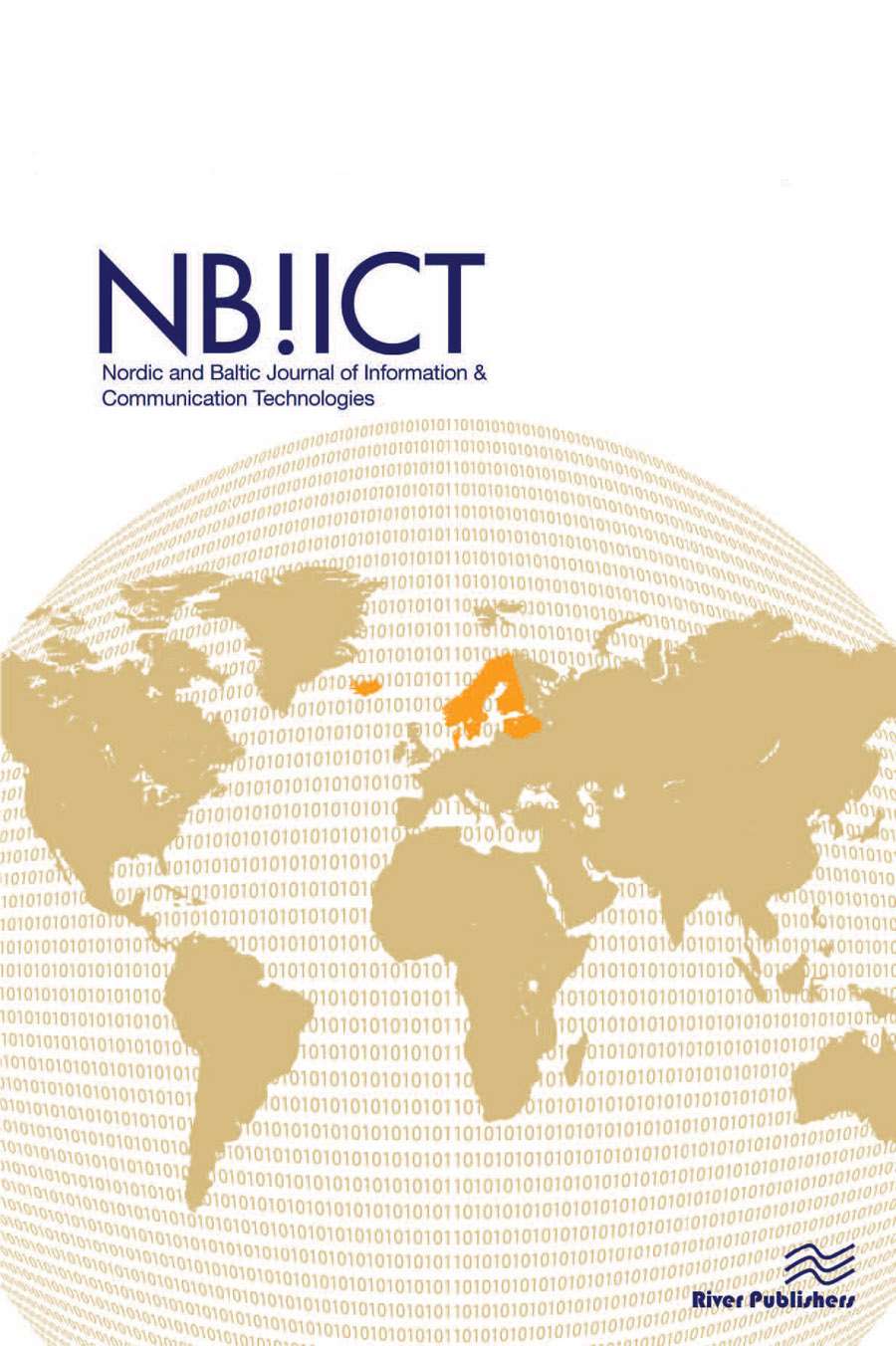Comparison of PD-NOMA for RF and VLC Based Vehicular Communication Under Various Weather Conditions
DOI:
https://doi.org/10.13052/nbjict1902-097X.2020.016Keywords:
RF Spectrum, Radio Frequency, Road Side UnitAbstract
In order to provide vehicles with reliable, ubiquitous, and massive connectivity, an appropriate multiple access (MA) scheme should be adopted. An appealing MA scheme referred to as non-orthogonal multiple access (NOMA) has been gaining significant attention in vehicular networks among academia and industry. This work aims to show the technical feasibility of uplink vehicular-VLC system (V-VLC) using OPD-NOMA, which is a promising technique for future intelligent transportation system which has not been explored before. We aim to present a comprehensive qualitative and quantitative analysis on the performance of Optical Power Domain-NOMA (OPD-NOMA) based Vehicular Visible Light Communication (V-VLC) systems. In particular, we aim for designing V-VLC systems with robust information exchange over various weather conditions such as rain, light fog, dense fog, dry snow, etc. We make use of various analytical tools of stochastic geometry to derive theoretical expression for outage probability and throughput by modelling the location of the vehicle as a spatial Poisson point process. We compare the performance of OPD-NOMA based V-VLC with Vehicular Radio Frequency (V-RF) communication for three different traffic scenarios (i.e., sparse, medium, and dense traffic) in terms of outage probability and throughput. Our numerical results reveal that instead of viewing V-VLC as competing technology, it can be visualized as complementary technology to V-RF technology under different environmental conditions for future Intelligent Transportation System (ITS) to meet diverse requirements of 5G networks and beyond.
Downloads
References
M. Z. Chowdhury, M. T. Hossan, A. Islam, and Y. M. Jang, “A Comparative Survey of Optical Wireless Technologies: Architectures and Applications,” IEEE Access, vol. 6, pp. 9819–9840, 2018.
M. Elamassie, M. Karbalayghareh, F. Miramirkhani, R. C. Kizilirmak, and M. Uysal, “Effect of Fog and Rain on the Performance of Vehicular Visible Light Communications,” in 2018 IEEE 87th Vehicular Technology Conference (VTC Spring), June 2018, pp. 1–6.
M. Liaqat, K. A. Noordin, T. A. Latef, and K. Dimyati, “Power-Domain Non Orthogonal Multiple Access (PD-NOMA) in Cooperative Networks: an Overview,” Wireless Networks, pp. 1–23, 2018.
B. Di, L. Song, Y. Li, and Z. Han, “V2X meets NOMA: Non-Orthogonal Multiple Access for 5G-Enabled Vehicular Networks,” IEEE Wireless Commun., vol. 24, no. 6, pp. 14–21, Dec 2017.
H. Marshoud, V. M. Kapinas, G. K. Karagiannidis, and S. Muhaidat, “Non-Orthogonal Multiple Access for Visible Light Communications,” IEEE Photonics Technology Letters, vol. 28, no. 1, pp. 51–54, Jan 2016.
L. Yin, W. O. Popoola, X. Wu, and H. Haas, “Performance Evaluation of Non-Orthogonal Multiple Access in Visible Light Communication,” IEEE Transactions on Communications, vol. 64, no. 12, pp. 5162–5175, 2016.
X. Guan, Q. Yang, Y. Hong, and C. C.-K. Chan, “Non-Orthogonal Multiple Access with Phase Pre-Distortion in Visible Light Communication,” Optics express, vol. 24, no. 22, pp. 25 816–25 823, 2016.
Y. Fu, Y. Hong, L.-K. Chen, and C. W. Sung, “Enhanced Power Allocation for Sum Rate Maximization in OFDM-NOMA VLC systems,” IEEE Photonics Technology Letters, vol. 30, no. 13, pp. 1218–1221, 2018.
C. Chen, W.-D. Zhong, H. Yang, and P. Du, “On the Performance of MIMO-NOMA-Based Visible Light Communication Systems,” IEEE Photonics Technology Letters, vol. 30, no. 4, pp. 307–310, 2017.
N. DOCOMO, “Initial Views and Evaluation Results on Non-Orthogonal Multiple Access for NR,” in R1-165175, 3GPP TSG RAN WG1 Meeting, vol. 85, 2016.
W. Roh, “5G mobile communications for 2020 and beyond-vision and key enabling technologies,” Key note: at IEEE WCNC, 2014.
Y. Saito, Y. Kishiyama, A. Benjebbour, T. Nakamura, A. Li, and K. Higuchi, “Non-Orthogonal Multiple Access (NOMA) for Cellular Future Radio Access,” in 2013 IEEE 77th vehicular technology conference (VTC Spring). IEEE, 2013, pp. 1–5.
A. Al-Hourani, S. Kandeepan, and A. Jamalipour, “Stochastic Geometry Study on Device-to-Device Communication as a Disaster Relief Solution,” IEEE Transactions on Vehicular Technology, vol. 65, no. 5, pp. 3005–3017, 2015.
A. Al-Hourani, S. Kandeepan, and E. Hossain, “Relay-Assisted Device-to-Device Communication: A stochastic analysis of Energy Saving,” IEEE Transactions on Mobile Computing, vol. 15, no. 12, pp. 3129–3141, 2016.
Y. Wang, F. Liu, C. Wang, P. Wang, and Y. Ji, “Stochastic Geometric Analysis in Cooperative Vehicular Networks Under Weibull Fading,” IEEE Access, vol. 7, pp. 158 655–158 670, 2019.
B. Błaszczyszyn, P. Mühlethaler, and Y. Toor, “Stochastic Analysis of Aloha in Vehicular Ad hoc Networks,” Annals of telecommunications-Annales des télécommunications, vol. 68, no. 1-2, pp. 95–106, 2013.
B. Blaszczyszyn, P. Mühlethaler, and Y. Toor, “Maximizing Throughput of Linear Vehicular Ad-hoc Networks (VANETs)—A Stochastic Approach,” in 2009 European Wireless Conference. IEEE, 2009, pp. 32–36.
T. Komine and M. Nakagawa, “Fundamental Analysis for Visible-Light Communication System using LED lights,” IEEE transactions on Consumer Electronics, vol. 50, no. 1, pp. 100–107, 2004.
M. Haenggi, Stochastic Geometry for Wireless Networks. Cambridge University Press, 2012.
C. A. O’cinneide, “Euler Summation for Fourier series and Laplace Transform Inversion,” Stochastic Models, vol. 13, no. 2, pp. 315–337, 1997.
J. Abate and W. Whitt, “Numerical Inversion of Laplace Transforms of Probability Distributions,” ORSA Journal on computing, vol. 7, no. 1, pp. 36–43, 1995.
A. Goldsmith, Wireless Communications. Cambridge university press, 2005.
E. Steinmetz, M. Wildemeersch, T. Q. S. Quek, and H. Wymeersch, “A stochastic geometry model for vehicular communication near intersections,” in 2015 IEEE Globecom Workshops (GC Wkshps), 2015, pp. 1–6.
G. Singh, A. Srivastava, and V. A. Bohara, “Impact of Weather Conditions and Interference on the Performance of VLC based V2V Communication,” in 2019 21st International Conference on Transparent Optical Networks (ICTON), July 2019, pp. 1–4.
G. Singh, A. Srivastava, and V. A. Bohara, “On Feasibility of VLC Based Car-to-Car Communication under Solar Irradiance and Fog Conditions,” in Proceedings of the 1st International Workshop on Communication and Computing in Connected Vehicles and Platooning, ACM MOBICOM, 2018, pp. 1–7.


